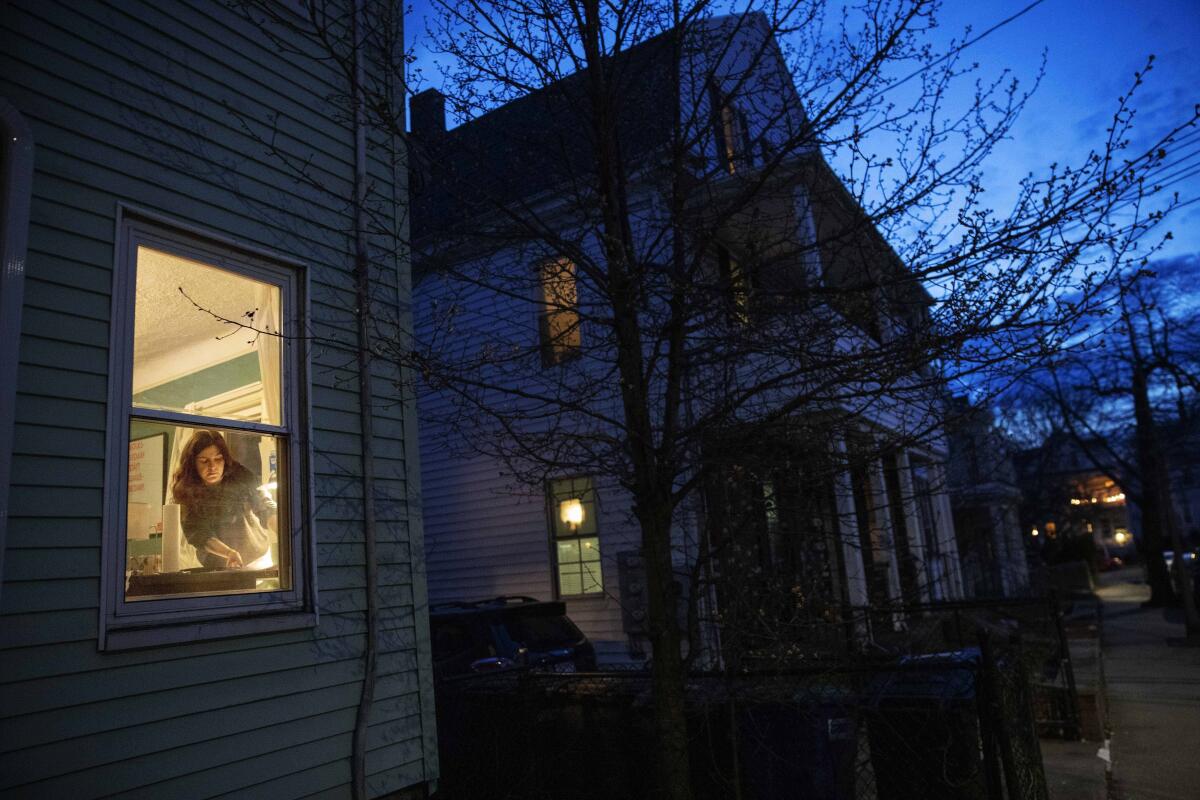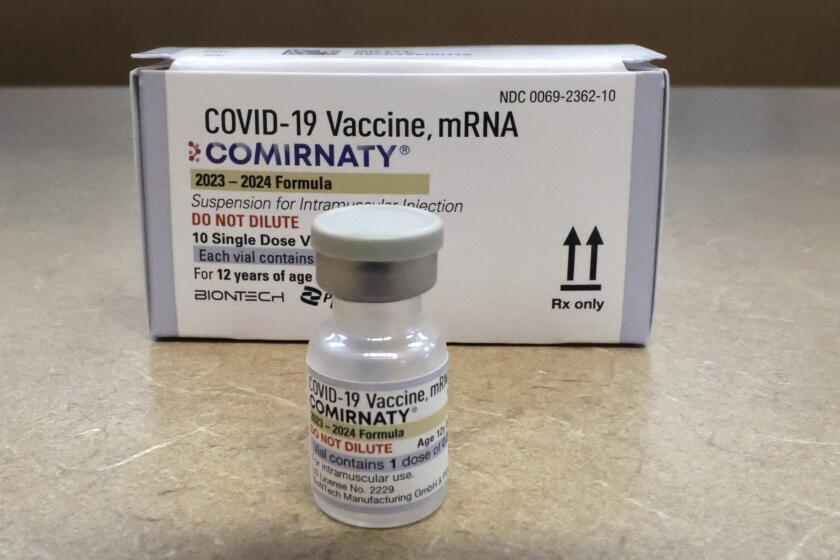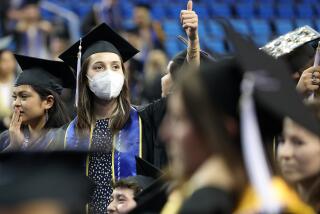U.S. health officials drop 5-day isolation time for COVID-19

- Share via
NEW YORK — Americans who test positive for COVID-19 no longer need to stay in isolation for five days, U.S. health officials announced Friday.
The Centers for Disease Control and Prevention changed its long-standing guidance, saying that people can return to work or regular activities if their symptoms are mild and improving and it’s been a day since they’ve had a fever.
California health officials have already relaxed their isolation guidance, allowing people to continue with normal activities if they have no symptoms or to end isolation if their illness improves quickly.
The federal change comes at a time when COVID-19 is no longer the public health menace it once was. It dropped from being the nation’s third-leading cause of death early in the pandemic to 10th last year.
Those who test positive need to isolate and stay home only while they have symptoms. Those who test positive, but remain asymptomatic, do not need to do so.
Most people have some degree of immunity to the coronavirus from past vaccinations or from infections. And many do not follow the five-day isolation guidance anyway, some experts say.
“Our goal here is to continue to protect those at risk for severe illness while also reassuring folks that these recommendations are simple, clear, easy to understand, and can be followed,” said Dr. Mandy Cohen, the CDC’s director.
However, some experts worry that the change may increase the risk of infection for those people who are more vulnerable to developing severe illness.
Why are the guidelines changing?
COVID-19 is not causing as many hospitalizations and deaths as it did in the first years of the pandemic.
The change is an effort to streamline recommenda- tions so they are similar to long-standing recommendations for flu and other respiratory viruses. Many people with a runny nose, cough or other symptoms aren’t testing to distinguish whether it’s COVID-19, fluor something else, officials say.
This may not be as stringent, but also emphasizes that all people with respiratory symptoms should stay home while they are sick, said Dr. David Margolius, head of Cleveland’s public health department.
There’s been no recent change in the science of how long people with COVID-19 are contagious, said Jennifer Nuzzo, director of the Pandemic Center at Brown University’s School of Public Health.
“What has changed is how much COVID is harming us as a population,” Nuzzo said.
What are the new guidelines?
If you have symptoms, stay home until your symptoms are mild and improving and it’s been a day since you’ve had a fever. But then you can remain cautious by wearing a mask and keeping a distance from others.
There is no change to guidelines for nursing homes and healthcare facilities, however.
The CDC is emphasizing that people should still try to prevent infections in the first place, by getting vaccinated, washing their hands and taking steps to bring in more outdoor fresh air.
Federal health officials say U.S. adults 65 and older who got a shot of the updated COVID-19 vaccine in the fall should get a booster dose now, if at least four months have passed.
Is there opposition to this change?
Yes, and even some who understand the rationale for the change have concerns.
“My biggest worry in all of this is that employers will take this change in guidance to require employees to come back to work ... before they are ready to, before they feel well enough, and before they are not likely to pose harm to their co-workers,” Nuzzo said.
Is this the first change to COVID-19 isolation guidelines?
No. The CDC originally advised 10 days of isolation, but in late 2021 cut it to five days for Americans who catch the coronavirus and have no symptoms or only brief illnesses. Under that guidance, isolation ends only if a person has been fever-free for at least 24 hours without the use of fever-reducing medications and if other symptoms are resolving.
At the time, agency officials said the changes were in keeping with evidence that people with the coronavirus were most infectious in the two days before and three days after symptoms develop.








